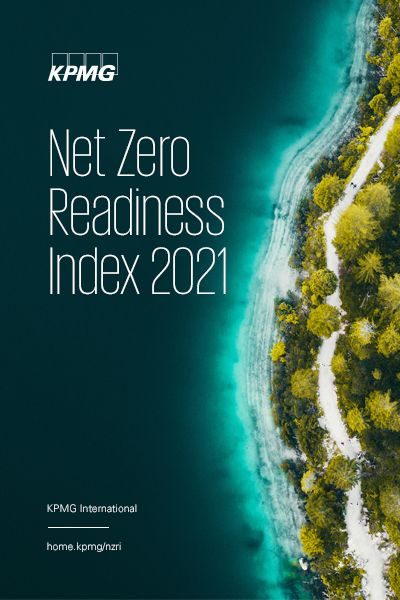While several countries have made progress in decarbonizing electricity and heat, there is a high degree of variability compared with other sectors in the NZRI. Improvements in access to electricity, a key sustainable development indicator and enabler of energy systems decarbonization, is evident across the NZRI countries with most already at 100 percent, and 90 percent of the world's population having access to electricity in 2019.1 This means fewer countries are held back by concerns about basic energy security, which enables more investment into renewable energy, energy networks and resilience. While intermittency of renewables could be challenging in some countries, the last decade has seen technological development and commercialization of various energy storage technologies that can improve resilience. Investors are keen to support clean energy projects, but governments need to continue providing support mechanisms and expanding project pipelines.
The UN International Panel on Climate Change assessment report, published in 2014, recommended the use of natural gas as a transition fuel to assist in shifting away from coal and oil. This transitional role of natural gas in power generation as well as other sectors is projected to continue until at least 2025.
Top five countries in electricity and heat decarbonization readiness

Delivery capability
The top five countries in the Index for electricity and heat have all invested strongly in delivery capability. Examples include significant planned grid investment in Chile, a robust set of clean energy infrastructure projects in the UK and active clean technology markets in Denmark.
The world has made substantial progress on decarbonizing electricity generation over recent years, but there is still much more that needs to be done. Mike Hayes, Global Climate Change and Decarbonization Lead, KPMG in Ireland, says that European countries will need to quadruple renewable generation over the next 10-15 years. This will be needed to replace remaining power generation that generates greenhouse gases, but also to serve rising new demand for green electricity from sectors including transport and industry and to help catalyze the emerging green hydrogen industry. “There is no point having electric cars driven with electricity sourced from fossil fuels,” says Hayes.
This expansion is expected across all forms of renewable generation. For offshore wind, as well as adding to the fleet of turbines fixed to the seabed, operators will introduce floating units that can work in deep water, allowing new areas of ocean to be used for power generation. Hayes also expects expanded use of solar power and renewed interest in wave and tidal power over the next decade. The UK, ranked second for electricity and heat, is considered a world leader in the tidal power market, an area with exciting potential.
The NZRI highlights a lack of planned investment in grid infrastructure. This will have to change says Hayes, as connecting new power sources to consumers and coping with greatly increased capacity will require substantial investment.
Government action
The countries ranking highest in electricity and heat also score well on government action. Many are implementing mechanisms including mid-term renewable energy targets, renewable obligations for utilities, tradeable renewables certificates, net metering that allows consumers to sell power back to the grid, low carbon hydrogen strategies and support mechanisms. Government intervention will be required in some countries to make it easier for companies to buy power specifically from renewable sources to support them in moving to Net Zero, by making regulatory and legal changes. Hayes says the regulatory environment is increasingly supportive, with July 2021's European Green Deal raising the EU's 2030 target for renewable electricity from 32 percent of all generation to 40 percent, compared with around 20 percent now.
Heating is less decarbonized than electricity and will need focused attention over the coming decade, Hayes says. Unlike electricity, much heat generation currently takes place in people's homes through burning fossil fuels. Alternatives including electrically operated heat pumps are expensive to install and green hydrogen is currently uncompetitive on price.
The NZRI shows that incentivization and support mechanisms are currently under-used by countries, but Hayes believes governments will have to intervene: “Government intervention has helped to foster renewable energy through support and tariffs. More will have to be done to foster the decarbonization of heat.”
The Index results show a clear interdependence between delivery capability and supporting policy mechanisms to escalate the rollout of renewable energy. On both electricity and heat decarbonization, governments should look at lowering barriers for project developers, such as making it easier and quicker to obtain planning permissions and connect to power grids. There is an abundance of capital to fund such work. Hayes adds: “If you free up the regulatory barriers, investors will flow in. Shortage of projects is the issue.”
Denmark's score reflects a combination of high long-term ambitions and focused short-term actions. This has given Denmark a high penetration of renewable energy in electricity and heat production, and stimulated industrial leadership in green technology.
Get in touch
Argentina | Australia | Brazil | Canada | Chile | China | Denmark | France | Germany | Hungary | India | Indonesia | Italy | Japan | Malaysia |
Mexico | New Zealand | Nigeria | Norway | Poland | Russia | Saudi Arabia | Singapore | South Africa | South Korea | Spain | Sweden | Thailand |
Turkey | United Arab Emirates | United Kingdom | United States
1 'Access to electricity', International Energy Agency, accessed July 2021. https://www.iea.org/reports/sdg7-data-and-projections/access-to-electricity



